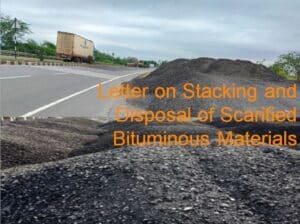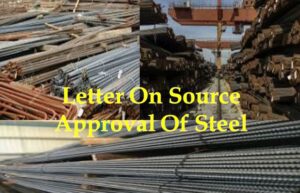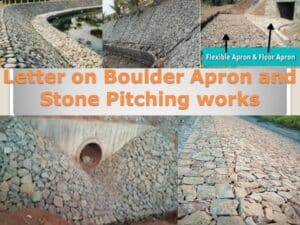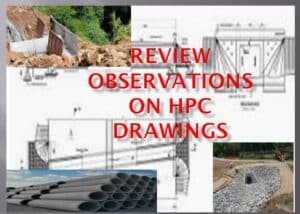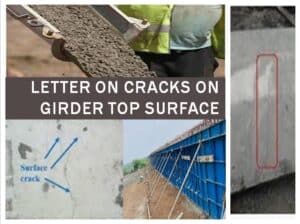Electrical lane crossing permission
This text involves permission for an electric lane crossing on the highway. It includes observations by the independent engineer about granting this permission.
The Independent Engineer has made observations regarding the granting of permission for an electrical lane crossing.
- These observations will cover the following:
- About the site condition at the proposed location for the electrical lane crossing
- This is where the foundations for the towers and poles of the crossing will lie.
- The requirements come from both the Ministry IRC and IS codes.
- The procedure involves setting up and stringing the lanes.
- The work procedures should incorporate safety measures.
- Communication with the Authority, Independent Engineer, and Concessionaire.
- Finally, it will discuss the need to produce the necessary undertakings.
Report on according permission for electrical lane crossing on the project highway
-
- The report includes:
- Some background, like the applicant’s request and sending it to IE for review,.
- The site condition and right-of-way availability at the proposed location for the electrical lane crossing. And other important considerations.
- A drawing shows the planned electric crossing.
- Observe work rules and overall conditions.
- The work procedures should incorporate safety measures.
Electrical lane crossing permission Letter 1:
Observations on the Grant of Permission for an Electric Lane Crossing
This is a sample draft letter that contains observations related to granting permission for an electrical lane. The proposal calls for the electrical lane to cross the project highway.
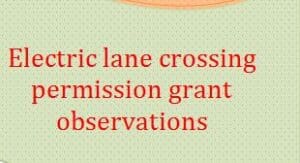
| To
The Highway Authority,
Subject: Observations regarding the granting of permission for electrical lane crossings -Reg
Dear Sir,
We have reviewed the proposal for a 33KV electrical line crossing Highway near XXXXXXXXXX Village at Km. 60.000 to 60.100 submitted by Electrical Department Ltd.
We have reviewed the relevance of the IRC specification, which pertains to the erection, maintenance, vertical and horizontal clearances, among other aspects, of overhead electric power lines.
The IRC: 32 Standard provides guidelines for the vertical and horizontal clearance of overhead electrical power and telecommunication lines in relation to roadways.
Here are our observations about the granting of permission:
Electrical lane crossing permission grant observations
- At the time of execution, you must strictly adhere to the location of the power line crossing at km. 60.000 to 60.100 of the XXXX-XXXX section.
- The part of the foundation of the electrical tower shall not fall in the ROW of the highway.
- Electrical towers, including supporting structures if any, shall be erected at the extreme end of the ROW. And we are at a minimum distance of 5.0 m from the nearest line of Avenue Plantation.
- The minimum vertical clearance of the overhead electrical line for crossing the project highway shall be in accordance with the guidelines as mentioned in the Central Electricity Authority Regulations and Statutory Provisions of the Indian Electricity Rules.
- In this case, the vertical clearance distance between the carriageway crown and the lowest point of any overhead conductor installation, which includes the conductor wire, barrier wire, guard cradle, or screen, shall be less than 6.50 m.
- The lowest point shall be determined after accounting for the maximum possible sag in the lowest member of the conductor installation.
- A guard cradle or screen shall be provided for the overhead electrical lines. And the same shall be extended desirably over the full ROW of the project highway at the locations of crossing the highway.
- The electrical department, which is in charge of doing the work, needs to follow IRC 32-1969. The IRC 32-1969 standard governs the vertical and horizontal clearance of overhead electrical power and telecommunication lines in relation to roads.
- They also need to follow the Central Electricity Authority Regulations, the Statutory Provisions of the Indian Electricity Rules, and any other relevant guidelines issued by the Highway Authority, MORT&H, on this topic.
- The highway authority, IE, or concessionaire must receive a copy of the work program well in advance.
- The highway authority must also receive a list and contact numbers of the responsible engineers from the aforementioned agency who are on site for site-level coordination.
- The concerned electrical department shall make all necessary safety arrangements for carrying out the works referred to in the subject matter.
- The electrical department will bear any liabilities or claims arising from the execution of the work.
- This is necessary to ensure a smooth and uninterrupted flow of traffic along the project highway. Highway authorities must grant the necessary permission well in advance if any lane closure is necessary for carrying out such works.
- The electrical department must submit the proposed arrangements for safety, protection, structural stability, and the necessary undertakings with the application, adhere to them, and implement them.
- According to the undertaking that the applicant or electrical department submitted, they must start the work after receiving approval from the highway authority.
- The relevant electrical department or the applicant may be required to submit all test certificates for the materials used in power lines. We shall follow the provisions stipulated in IRC 32-1969 for arrangements such as a guard cradle or screen for safety.
This is for your kind information.
Thanking you while ensuring you our best services.
[Yours,]
[Insert the name of the authorized person]. |
Electrical lane crossing permission Letter 2:
Report on according permission for electrical lane crossing.
This pertains to the process of obtaining permission for an electrical lane crossing on the project highway.
| To
The Highway Authority,
Subject: Report on obtaining permission for an electrical lane crossing on the project highway
Dear Sir,
This pertains to the previously mentioned subject matter and reference cited-1, in which the Highway Authority has asked the IE to conduct an inspection and provide comments and recommendations on the proposal that the applicant submitted.
The reference cited above refers to a request for permission to install an 11KV line across the highway for godowns.
The independent engineer has inspected the proposal jointly with the representatives of the concessionaire and applicant.
The independent engineer’s comments and recommendations on the proposal are as follows:
- The property, i.e., M/S XXXX, is located adjacent to the approach road of the project highway, and the approach road leads to XXXXXX village at km 60+500 LHS.
- The 11/33 KV power substation exists on the abutting highway on RHS at km. 60+400.
- The applicant intends to draw electric power through an 11KV line by crossing the highway at Km. 60+510 from the substation, which is located outside of the ROW at Ch. 60+430 RHS.
- The enclosed sketch shows the line diagram of the proposed 11KV line crossing the highway.
- As measured on site, the available ROW at the proposed location is approximately 60 m.
- Based on the site observations, we may grant permission for the proposed project, subject to the following conditions:
- Shall maintain the minimum vertical clearance of 6.5 m from the highest point of the carriageway, according to IRC 32. This is the standard for the vertical and horizontal clearance of overhead electrical power and telecommunication lines in relation to roads.
- The applicant or the electrical department must submit an undertaking that states, “M/s XXX State Electrical Distribution Corporation Limited shall be solely responsible for any future extensions or modifications for the development of highways, if necessitated by the road authority, the shifting of the electrical lines with all costs.”
- The poles shall be erected at the extreme edge of the ROW of the project highway. And these shall be within the utility corridor, i.e., 5 m from the extreme edge of the ROW on both sides.
- During the construction of the XXKV electrical line, necessary safety arrangements, traffic management, and notification to local authorities are the sole responsibility of the electrical department and applicant.
- If any damage occurs during the erection of the electrical line, the applicant will be responsible for rectifying it.
- The Executive Engineer, State Power Distribution Corporation Limited, shall indemnify for any damages or restorations, if any, during or after the erection of the electrical line.
- The work shall be carried out strictly in accordance with the guidelines and norms issued by the Government of XXXXX (the concerned state name).
Thanking you while ensuring you our best services.
[Yours Sincerely,]
[Insert the name of the authorized person]. |
Electrical lane crossing permission grant observations: note to visitor
The site conditions and proposed electrical line capacity, such as 11 kV, 33 kV, 110 kV, 440 kV, and 765 kV, require the necessary modifications. Note that the sample report or observations above pertain to power lanes up to 33 kV; we must adopt relevant codes for higher kV lanes. Additionally, it’s important to regularly update codal provisions, circulars, and amendments from the highway authority and central electrical department when drafting letters.
Also, read highway traffic block permission for the stringing of an electrical lane on the project highway.
Also read about the highway lane closure procedures and traffic diversion plans on the highway.
Additionally, you can find various sample draft formats for highway operation and maintenance correspondence.
Electrical Lane Crossing Permission Grant: FAQs
Nil.


